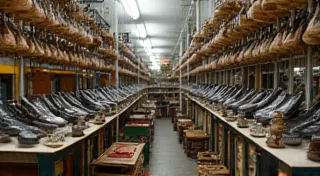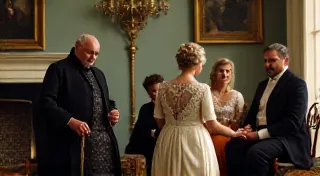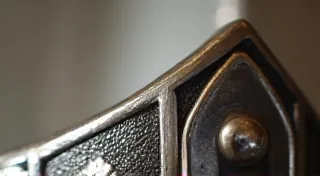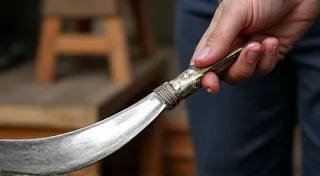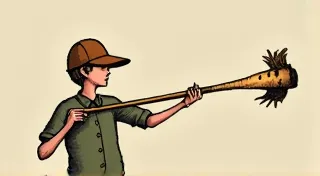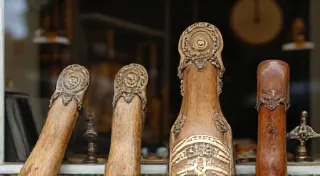Beyond the Basics: Unusual and Rare Shoehorn Variations
Welcome back to Collecting Vintage Shoehorns! We've previously covered the basics of collecting – the common materials, styles, and eras that form the foundation of any good collection. But for those seeking true treasures, a journey beyond the commonplace is essential. This article delves into the unusual and rare variations of vintage shoehorns, showcasing the creativity and craftsmanship that elevates these often-overlooked accessories from functional objects to genuine works of art. Prepare to be surprised by the diversity and ingenuity found within this niche world of collectible accessories.
Animal Forms: A Zoological Delight
While plain, utilitarian shoehorns are plentiful, those sculpted into animal shapes are a different story. These aren't just decorative flourishes; they reflect a broader trend in Victorian and Edwardian design, where natural motifs were popular in everything from furniture to jewelry. Finding a shoehorn in the shape of a leaping stag, a graceful swan, a playful squirrel, or a dignified lion adds significant value and visual appeal. The Victorians frequently gifted such items; for an exploration of shoehorns as gifts and their place in Victorian traditions, be sure to read our other article.
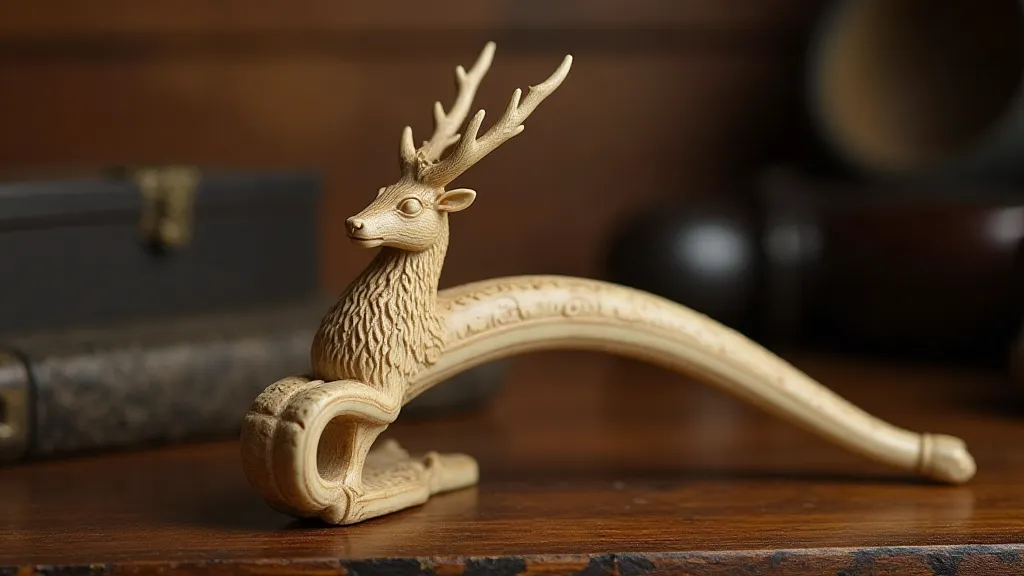
The rarity of animal-shaped shoehorns is compounded by the materials frequently used. Ivory was a common choice, contributing to their elegance, but its use is now heavily restricted. Other materials such as carved wood, bone, and occasionally even horn were utilized, each imparting a unique character. The quality of the carving is key; the more realistic and intricate the animal representation, the more desirable (and valuable) the shoehorn becomes.
Intricate Carvings & Reliefs: Miniature Masterpieces
Beyond simple animal forms, some vintage shoehorns feature intricate carvings and reliefs. These can depict scenes from mythology, landscapes, floral motifs, or even portraits. Such detail suggests a commission piece or a bespoke order for a wealthy patron, making them exceptionally rare. The craftsmanship involved is undeniable; these aren't mass-produced items but rather individual works of art.
Look for shoehorns with detailed floral designs, perhaps featuring roses, lilies, or other popular Victorian blooms. Carved landscapes depicting pastoral scenes or architectural details can also be highly sought after. The finer the detail, and the more skillfully executed, the greater the value. Identifying the artisan who created these pieces is almost impossible, but the evidence of their talent is undeniable. These bespoke items often accompanied other grooming tools, making a complete set a truly remarkable find.
Materials Beyond the Usual: Ivory, Silver, and Beyond
Most vintage shoehorns are made from materials like horn, wood, or celluloid. However, certain variations utilize materials that push them into the realm of true rarity. Silver shoehorns, particularly those with elaborate chased or engraved designs, are uncommon. They represent a level of luxury and personalization rarely seen in other shoehorn variations. The hallmark markings on silver shoehorns can help trace their origins and add to their provenance. Understanding these markings can be complex, and for a detailed guide to the markings on vintage shoehorns, including how to identify hallmarks and maker's marks, please see our related article.
Another exceptional material is ivory, though as previously mentioned, its use is now highly regulated. Antique ivory shoehorns are considered valuable, but their ownership and sale are subject to legal restrictions and ethical considerations. Look for examples with distinctive carving techniques or unique detailing.
Less common materials include jet (a form of fossilized wood, often used in mourning jewelry), and occasionally even certain types of semi-precious stones. These instances are extremely rare and contribute significantly to a shoehorn's overall value. Luxury items of this nature were frequently paired with other accessories to elevate the user's experience; they were integral to the presentation of elegance.
Unusual Shapes and Mechanisms: Beyond the Straightforward Design
While the typical shoehorn is a straightforward, elongated shape, some variations experimented with different designs. Telescoping shoehorns, where the horn retracts into a handle, were a relatively advanced innovation for the period. While not *rare* in the strictest sense, they are less common than standard designs and demonstrate ingenuity in their construction.
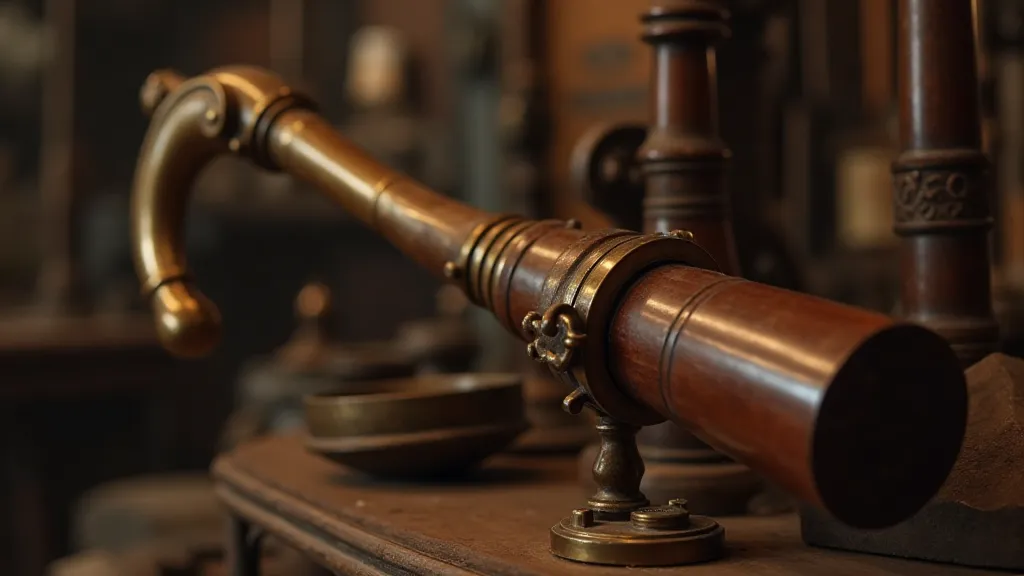
Other unusual shapes include those designed to resemble walking sticks or umbrellas, incorporating the shoehorn as a functional element. These hybrid designs are quite rare and demonstrate a desire to combine utility with aesthetic appeal. The handles themselves can also vary greatly, from simple wooden knobs to elaborate carved figures. The entire presentation of one’s grooming accessories was a statement of sophistication and status.
Shoehorn Accessories & Sets: A Complete Presentation
Finding a vintage shoehorn alone is a good find. However, locating a shoehorn accompanied by its original accessories—such as a matching glove stretcher, a boot hook, or even a bespoke storage case—is a truly exceptional occurrence. These sets were often commissioned for wealthy individuals and represent a complete presentation of personal grooming accessories. The importance of such a presentation cannot be overstated – the entire ensemble spoke volumes about the owner’s wealth and taste.
The presence of original packaging or documentation further enhances a shoehorn’s value. Identifying the retailer or manufacturer can provide valuable context and add to the object’s provenance.
Condition and Preservation: A Critical Factor
As with any antique, condition plays a vital role in a vintage shoehorn’s value. While minor signs of age and wear are to be expected, significant damage—such as cracks, chips, or repairs—can detract from its desirability. The presence of original finishes and hardware is also a positive factor.
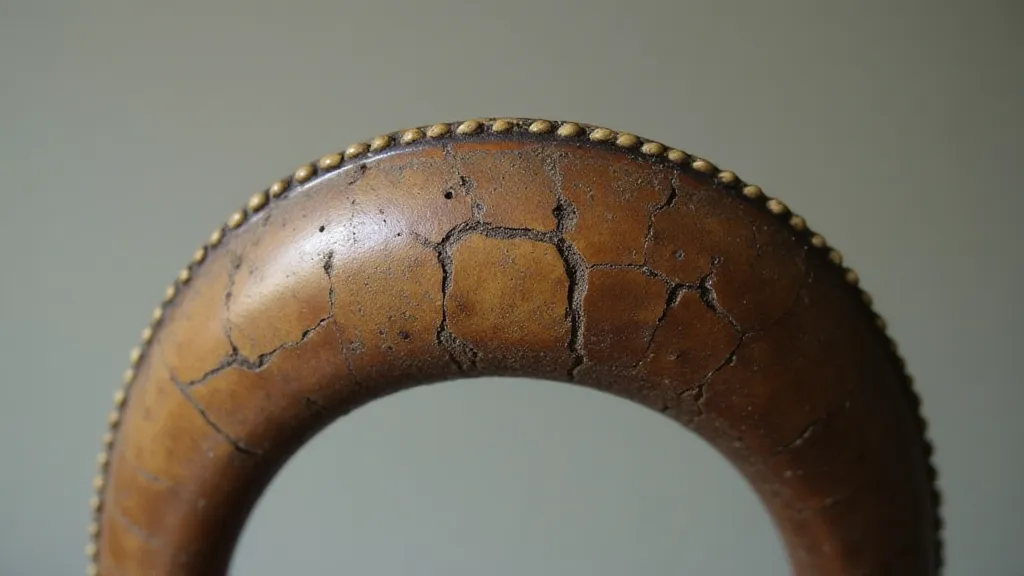
Careful handling and proper storage are essential for preserving the integrity of vintage shoehorns. Avoiding exposure to extreme temperatures, humidity, and direct sunlight can help prevent deterioration. The pursuit of refinement extended to every aspect of personal care, and preserving these artifacts allows us to appreciate that dedication.
Beyond Function: The Cultural Significance of Shoehorns
For many, a shoehorn is simply a tool to ease the act of putting on shoes. However, their history reflects a fascinating interplay of social customs, craftsmanship, and personal adornment. The formality of Victorian and Edwardian society demanded specific rituals for dressing, and these seemingly minor tools were intrinsic to the process.
Consider the role of the gentleman’s valet, who would have carefully prepared the gentleman's attire, including meticulously selecting and presenting the shoehorn. Or the lady’s maid, who would have facilitated her mistress’s dressing ritual with equal care and precision. The shoehorn wasn’t merely an object; it was a symbol of status, refinement, and personal attention.
The Advertising of Elegance: A Historical Perspective
The luxury of vintage shoehorns was often reflected in the advertisements of the era. These advertisements were more than just sales pitches; they were carefully crafted narratives designed to evoke a sense of aspiration and exclusivity. Elegant illustrations, sophisticated typography, and persuasive copy all worked together to portray the shoehorn as an essential component of a refined lifestyle.
Early advertising campaigns frequently showcased the shoehorn alongside other high-end accessories, emphasizing the importance of a complete and coordinated presentation. These ads provide a glimpse into the consumer culture of the time and offer valuable insights into the social and economic forces that shaped the market for luxury goods. For a deeper look into shoehorn advertising through the decades, explore our related article!
Conclusion: The Joy of the Hunt
Collecting vintage shoehorns is more than just acquiring functional objects; it’s about uncovering hidden gems of craftsmanship and design. While the common varieties offer a solid foundation for any collection, venturing into the realm of the unusual and rare unveils a world of unexpected treasures. The key is to be patient, observant, and always willing to appreciate the unique stories each shoehorn has to tell. Happy hunting!
